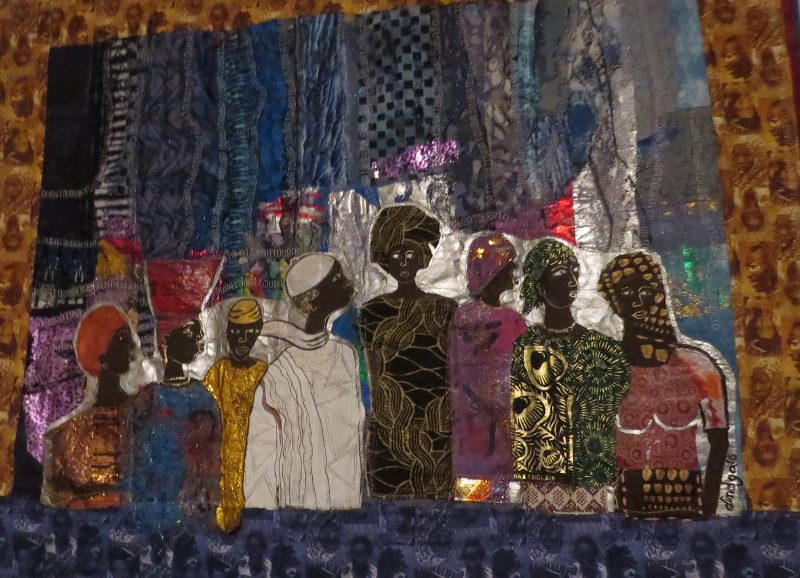
Rest But Don’t Forget to Weep
by Janyce Denise Glasper
The Colored Girls Museum contains harrowing levels of metaphoric entryways into once traumatized eyes of the black girl. This provincial ghost overcame dishonorable past. Oppressive chains and tyrannical rulers whipped flesh off back and placed choke hold on her mind, body, and soul. Now released yet not entirely freed from damaged control, she tells many stories inherently stretched through visiting artists. Their works adhere to her walls, sleep on her mantles, stand on her floors.
Latest exhibit, “A Good Night’s Sleep,” soothes 400 year tired bones. Various range of mediums sates ravenous appetite for truths that were stolen blind. No longer robbed and aware that collected riches existed, this vibrant spirit shares indulgent histories for all ages. From here, viewers take apart spirited ancestor’s storytelling rooms. They follow in her ghostly footsteps, apprehensively turning corners, down the creaky spiraled rabbit hole stairs are murals and woven fabrics.
First, rickety porch contains an inviting twin sized canopy bed, a see-through blissful fortress of puffed white pillows and tucked white sheets. For exhausted souls, such a sight purely seduces, its intentions to beguile eyes into succumbing to relaxing meditation.
At the top of spiral stairs, a painted kitchenette more magical than the swirling paintbrush imaginings of Vincent Van Gogh, a bathroom with posted positive self-help quotes. In next room, an impressive library of books ranging from John Steptoe’s Mufaro’s Beautiful Daughters to Michelle Alexander’s The New Jim Crow travel from impressive library shelves to mind as a couple discusses black female nudity wrapped in a flag–an extraordinary flag made with synthetic hair and cotton, created as the artist watched Alex Haley’s Roots.
On second level, inside bedroom of beautiful black yarn dolls and vanity mirrors, while Nina Simone deep bellows an onslaught of blistered, gut-wrenching jazz out of ancient jukebox, Barbara Bullock’s painted portraits of commanding black women add glow to warm earth hues. Lastly, a special presentation called The Colored Boys room features poignant portraits of black youth forever trapped in pigeonholed society. Made up of powerful stamina, a video plays of middle schoolers discussing race, identity, and growing up in America.
Overall, The Colored Girls Museum is rich in fascinating tales to spread down generation to generation like glittered heirlooms that a mother can pass to her daughter–thoughts of a liberated, enchanted world.
Janyce Denise Glasper is an artist and writer who recently graduated from Pennsylvania Academy of the Fine Arts’ MFA program, concentrating in painting, drawing, and writing. She is excited to be presenting a metaphorical fable on her artwork at Black Portraiture[s] III Conference in Johannesburg, South Africa very, very soon.









